AWS News Blog
AWS Media Services – Process, Store, and Monetize Cloud-Based Video
Do you remember what web video was like in the early days? Standalone players, video no larger than a postage stamp, slow & cantankerous connections, overloaded servers, and the ever-present buffering messages were the norm less than two decades ago.
Today, thanks to technological progress and a broad array of standards, things are a lot better. Video consumers are now in control. They use devices of all shapes, sizes, and vintages to enjoy live and recorded content that is broadcast, streamed, or sent over-the-top (OTT, as they say), and expect immediate access to content that captures and then holds their attention. Meeting these expectations presents a challenge for content creators and distributors. Instead of generating video in a one-size-fits-all format, they (or their media servers) must be prepared to produce video that spans a broad range of sizes, formats, and bit rates, taking care to be ready to deal with planned or unplanned surges in demand. In the face of all of this complexity, they must backstop their content with a monetization model that supports the content and the infrastructure to deliver it.
New AWS Media Services
Today we are launching an array of broadcast-quality media services, each designed to address one or more aspects of the challenge that I outlined above. You can use them together to build a complete end-to-end video solution or you can use one or more in building-block style. In true AWS fashion, you can spend more time innovating and less time setting up and running infrastructure, leaving you ready to focus on creating, delivering, and monetizing your content. The services are all elastic, allowing you to ramp up processing power, connections, and storage and giving you the ability to handle million-user (and beyond) spikes with ease.
Here are the services (all accessible from a set of interactive consoles as well as through a comprehensive set of APIs):
AWS Elemental MediaConvert – File-based transcoding for OTT, broadcast, or archiving, with support for a long list of formats and codecs. Features include multi-channel audio, graphic overlays, closed captioning, and several DRM options.
AWS Elemental MediaLive – Live encoding to deliver video streams in real time to both televisions and multiscreen devices. Allows you to deploy highly reliable live channels in minutes, with full control over encoding parameters. It supports ad insertion, multi-channel audio, graphic overlays, and closed captioning.
AWS Elemental MediaPackage – Video origination and just-in-time packaging. Starting from a single input, produces output for multiple devices representing a long list of current and legacy formats. Supports multiple monetization models, time-shifted live streaming, ad insertion, DRM, and blackout management.
AWS Elemental MediaStore – Media-optimized storage that enables high performance and low latency applications such as live streaming, while taking advantage of the scale and durability of Amazon Simple Storage Service (Amazon S3).
AWS Elemental MediaTailor – Monetization service that supports ad serving and server-side ad insertion, a broad range of devices, transcoding, and accurate reporting of server-side and client-side ad insertion.
Instead of listing out all of the features in the sections below, I’ve simply included as many screen shots as possible with the expectation that this will give you a better sense of the rich set of features, parameters, and settings that you get with this set of services.
AWS Elemental MediaConvert
MediaConvert allows you to transcode content that is stored in files. You can process individual files or entire media libraries, or anything in-between. You simply create a conversion job that specifies the content and the desired outputs, and submit it to MediaConvert. There’s no software to install or patch and the service scales to meet your needs without affecting turnaround time or performance.
The MediaConvert Console lets you manage Output presets, Job templates, Queues, and Jobs:
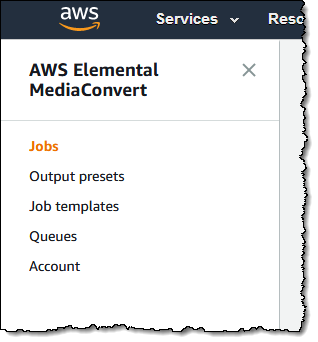
You can use a built-in system preset or you can make one of your own. You have full control over the settings when you make your own:
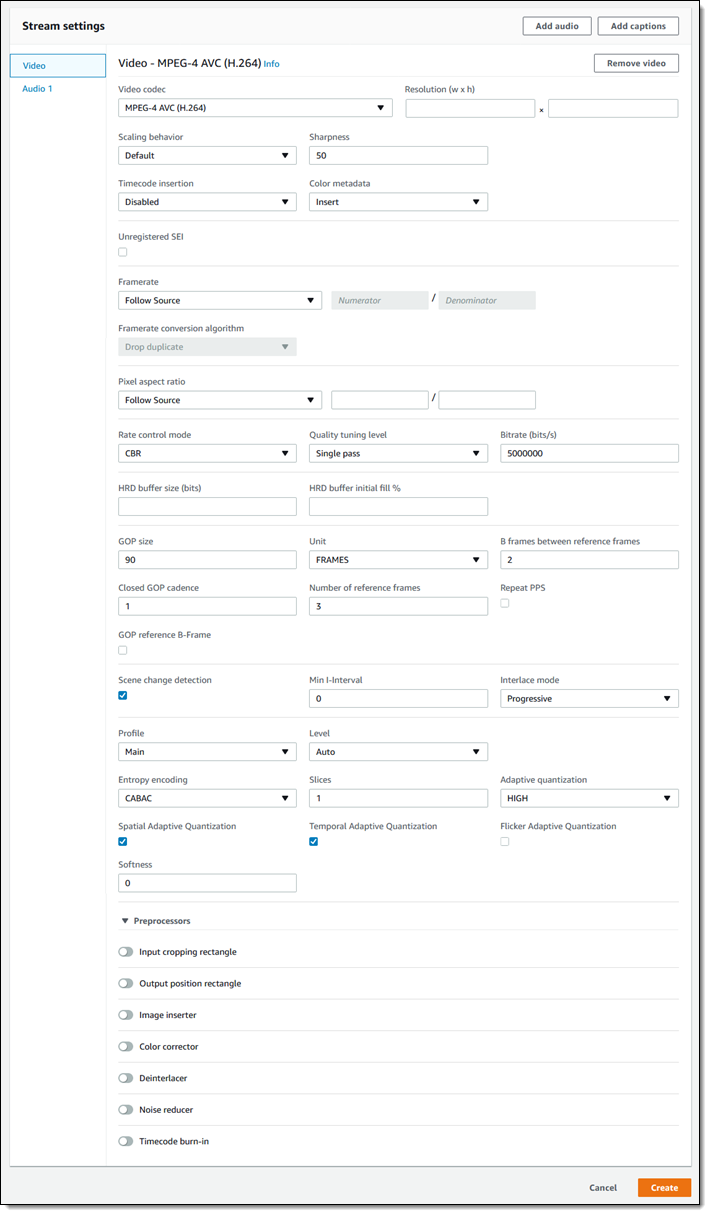
Jobs templates are named, and produce one or more output groups. You can add a new group to a template with a click:

When everything is ready to go, you create a job and make some final selections, then click on Create:
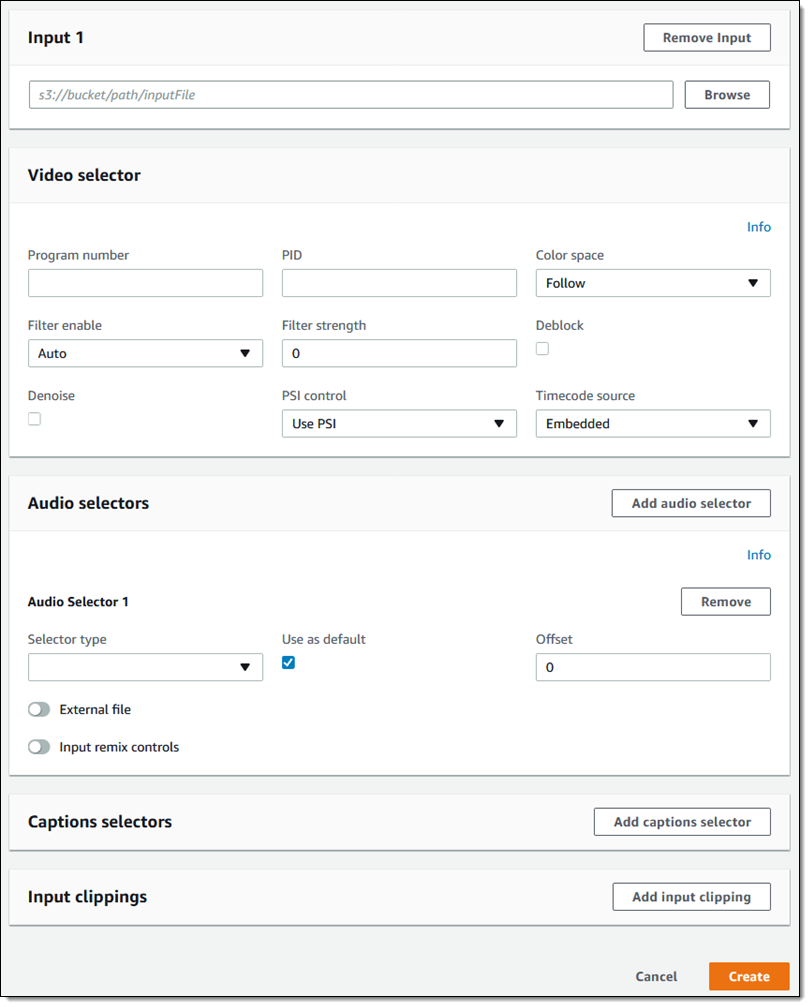
Each account starts with a default queue for jobs, where incoming work is processed in parallel using all processing resources available to the account. Adding queues does not add processing resources, but does cause them to be apportioned across queues. You can temporarily pause one queue in order to devote more resources to the others. You can submit jobs to paused queues and you can also cancel any that have yet to start.
Pricing for this service is based on the amount of video that you process and the features that you use.
AWS Elemental MediaLive
This service is for live encoding, and can be run 24×7. MediaLive channels are deployed on redundant resources distributed in two physically separated Availability Zones in order to provide the reliability expected by our customers in the broadcast industry. You can specify your inputs and define your channels in the MediaLive Console:
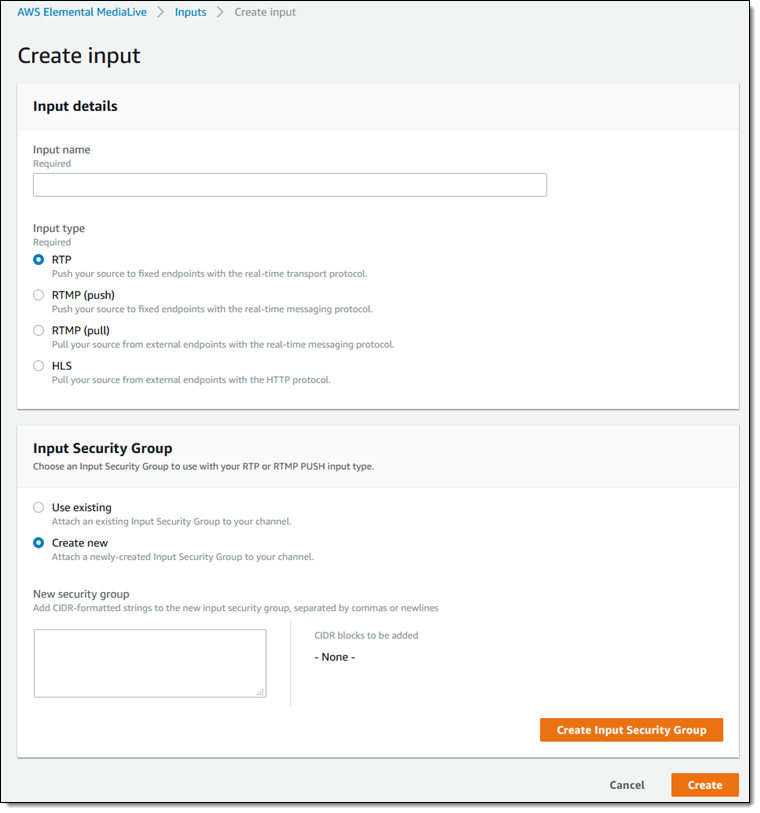
After you create an Input, you create a Channel and attach it to the Input:
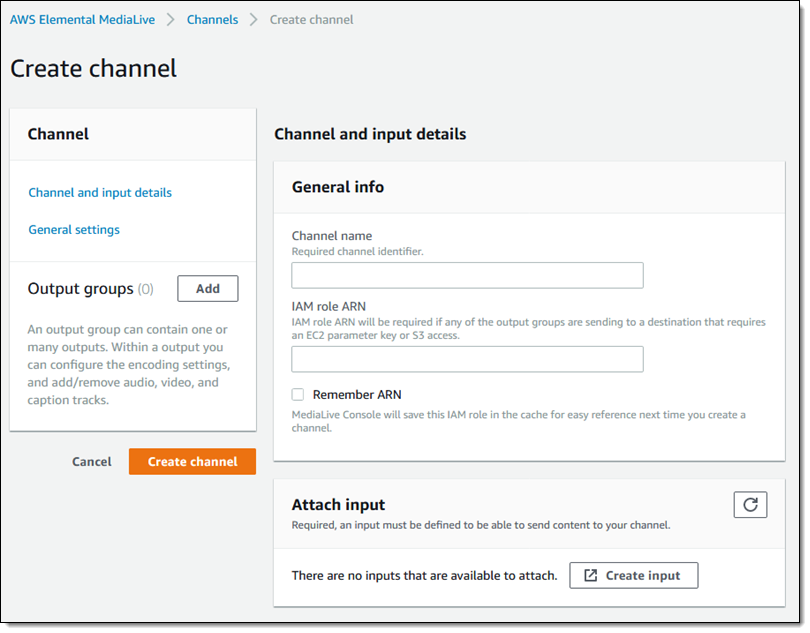
You have full control over the settings for each channel:
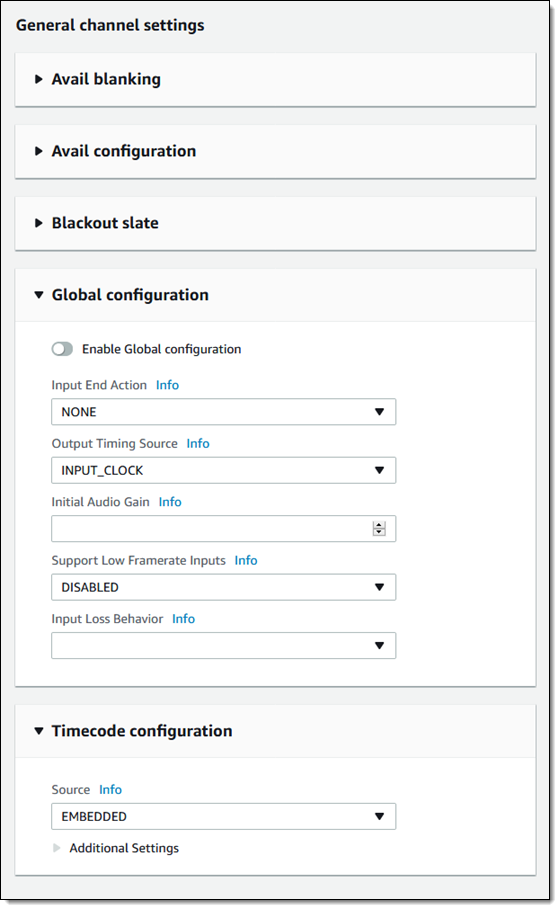
AWS Elemental MediaPackage
This service lets you deliver video to many devices from a single source. It focuses on protection and just-in-time packaging, giving you the ability to provide your users with the desired content on the device of their choice. You simply create a channel to get started:
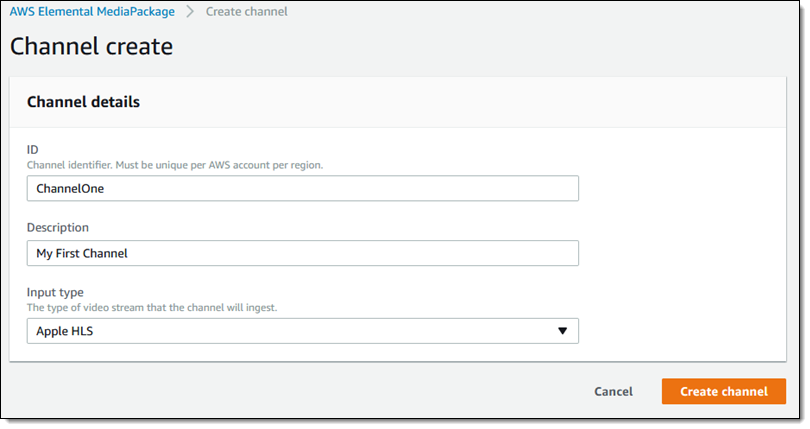
Then you add one or more endpoints. Once again, plenty of options and full control, including a startover window and a time delay:
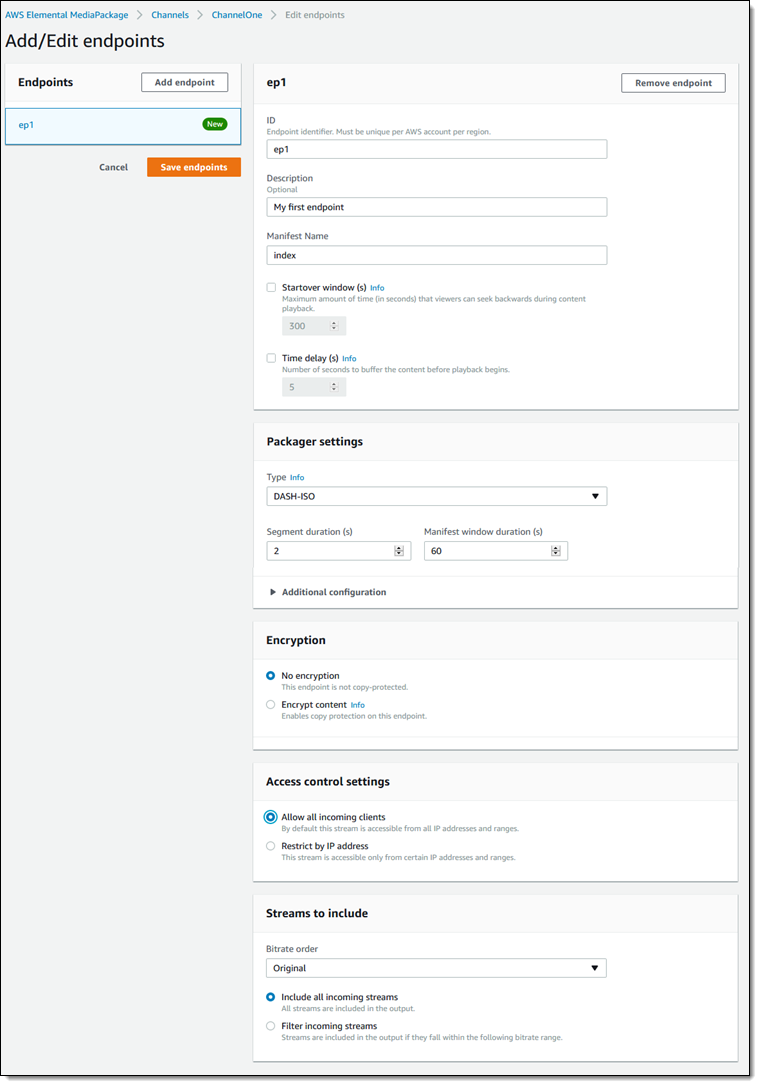
You find the input URL, user name, and password for your channel and route your live video stream to it for packaging:
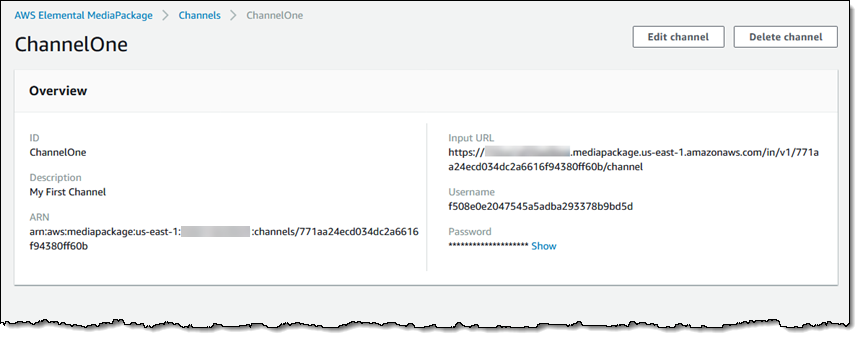
AWS Elemental MediaStore
MediaStore offers the performance, consistency, and latency required for live and on-demand media delivery. Objects are written and read into a new “temporal” tier of object storage for a limited amount of time, then move silently into S3 for long-lived durability. You simply create a storage container to group your media content:
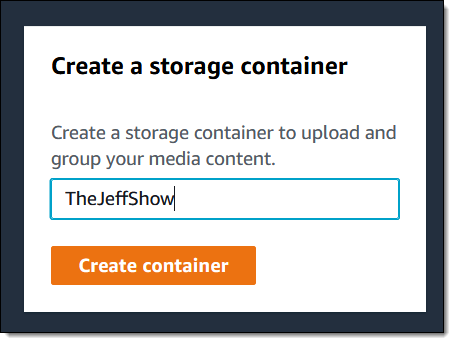
The container is available within a minute or so:
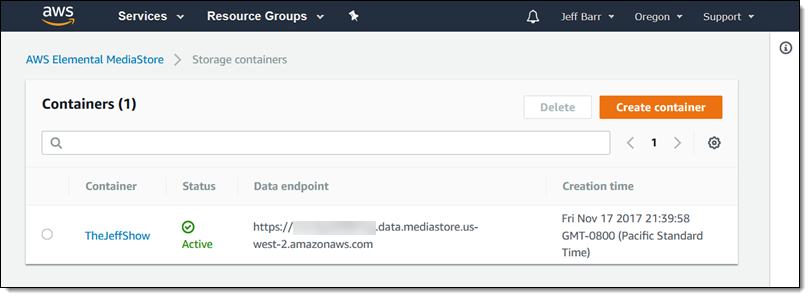
Like S3 buckets, MediaStore containers have access policies and no limits on the number of objects or storage capacity.
MediaStore helps you to take full advantage of S3 by managing the object key names so as to maximize storage and retrieval throughput, in accord with the Request Rate and Performance Considerations.
AWS Elemental MediaTailor
This service takes care of server-side ad insertion while providing a broadcast-quality viewer experience by transcoding ad assets on the fly. Your customer’s video player asks MediaTailor for a playlist. MediaTailor, in turn, calls your Ad Decision Server and returns a playlist that references the origin server for your original video and the ads recommended by the Ad Decision Server. The video player makes all of its requests to a single endpoint in order to ensure that client-side ad-blocking is ineffective. You simply create a MediaTailor Configuration:

Context information is passed to the Ad Decision Server in the URL:
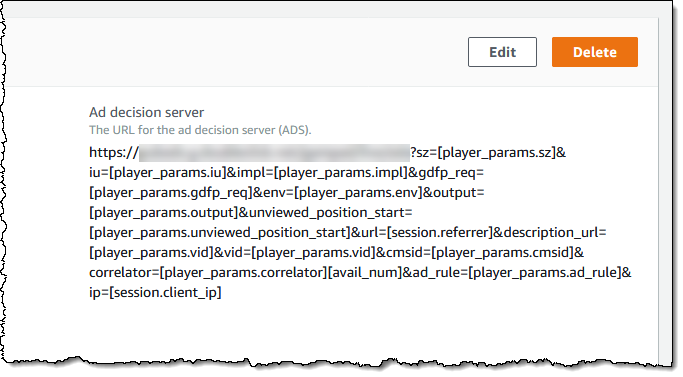
Despite the length of this post I have barely scratched the surface of the AWS Media Services. Once AWS re:Invent is in the rear view mirror I hope to do a deep dive and show you how to use each of these services.
Available Now
The entire set of AWS Media Services is available now and you can start using them today! Pricing varies by service, but is built around a pay-as-you-go model.
— Jeff;